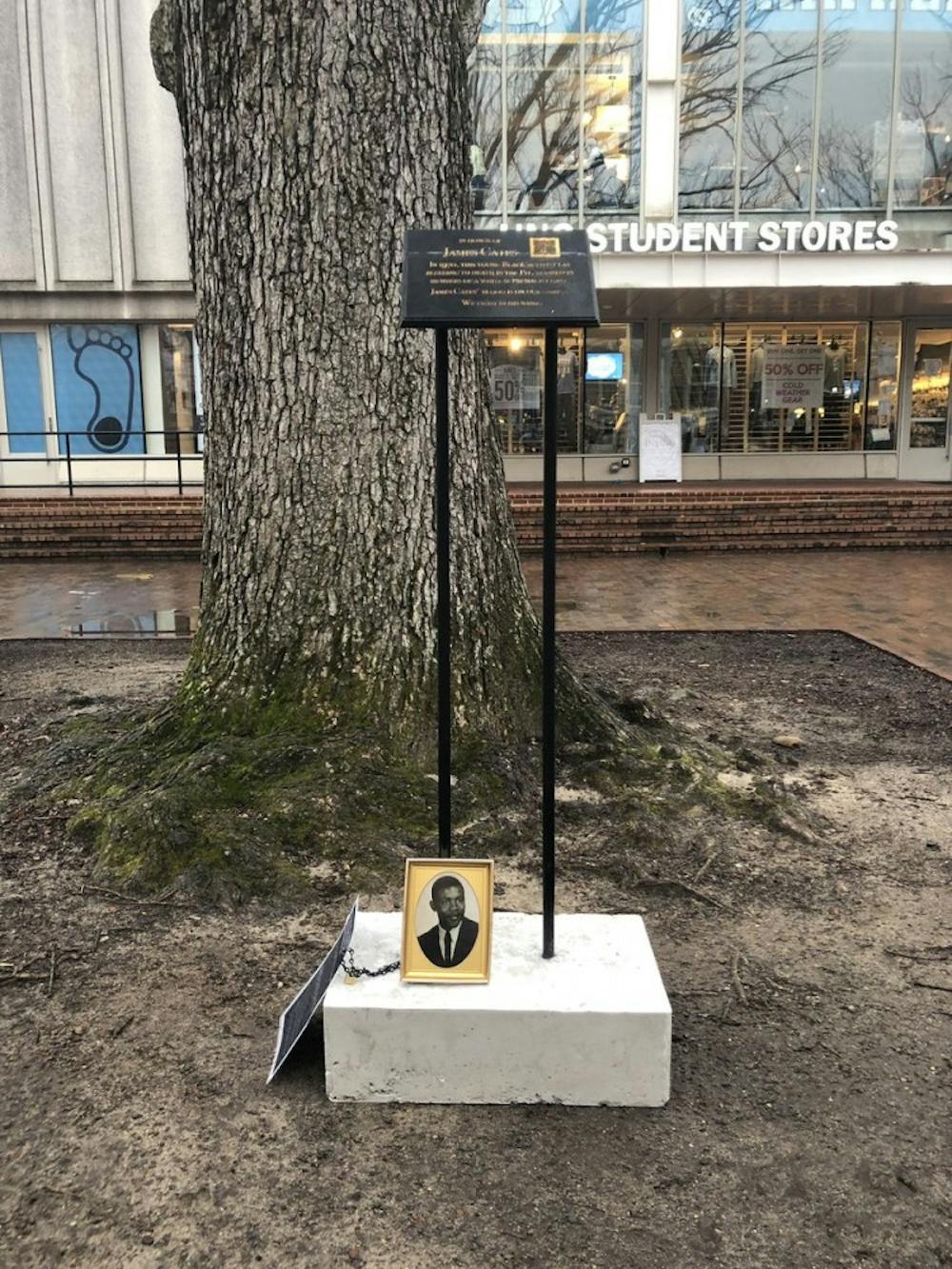UNC’s overnight removal of an activist-placed memorial for a Black UNC student murdered on campus by a white supremacist gang in 1970 has sparked new challenges to the same law complicating Silent Sam’s fate.
The memorial commemorating James Cates was placed by activists on Tuesday afternoon in the Pit, the same place he was killed 49 years ago. The murder of Cates has become a focal point in recent anti-racist activism at the University.
By the next morning, the memorial was gone.
Upon placing the memorial, the activists attached a copy of N.C. General Statute 100-2.1(b), a subsection of a 2015 state law that sets restrictions on the removal of objects like monuments, memorials and works of art.
Since Silent Sam’s impromptu toppling last year, the same subsection of that law has been cited by some, including UNC-system Board of Governors member Thom Goolsby, as reasoning for the Confederate monument’s necessary return to campus.
The University said in a statement to The Daily Tar Heel that its removal of the activists’ memorial did not apply to the 2015 law because the memorial isn't owned by the state.
Therefore, the University stated, it removed the memorial per its facilities use policy, which states that “temporary structures” are permitted in areas of campus if properly approved, and that “no temporary structures shall remain outdoors overnight.”
However, law student and activist, Gina Balamucki, who has acted as Maya Little's Honor Court counsel, said that the University’s argument does not apply to the protections that she and other activists referenced when first placing the memorial.
Now, Balamucki wants to take UNC to court over it.



